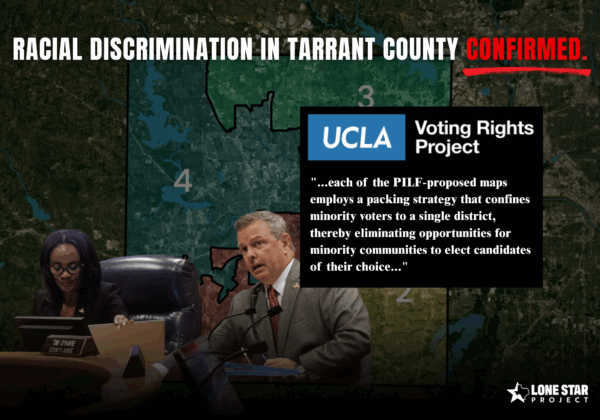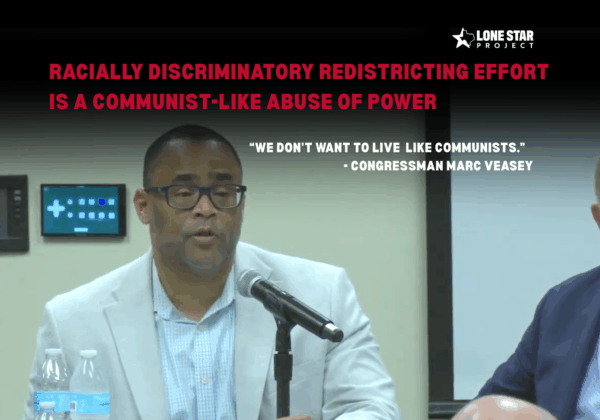The Lone Star Project has received a series of questions about the Texas County/Senate District Conventions and the overall convention process. Some of the most frequently asked questions with answers are below.
Convention Details
What are the Texas County/Senate District Conventions?
The County/Senate District Conventions are the second Tier in the Texas Democratic Party’s three tier system. (The precinct convention is the first tier and state convention is the third tier).
When are the County/Senate District Conventions?
They will be held on March 29, 2008. (Texas Election code: § 174.063)
Who decides when the County/Senatorial District Conventions are held?
The date of the County or Senate District Convention is set by State Law.
What is the difference between a County Convention and a Senatorial District Convention?
Each County that lies wholly within one Senate District will have a County Convention. (Example: Webb County is wholly with Senate District 21, so it will have a County Convention for all precincts in Webb County.) When parts of one county belong to more than one senatorial district, there shall be held, in lieu of a County Convention, a Senatorial District Convention for each part of the county falling into a different senatorial district. (Example: El Paso County is split into Senate District 29 and Senate District 19. Two Senate District Conventions may be held in El Paso County made up of their respective precincts.)
Who attends the County/Senate District Conventions?
Anyone may attend the Conventions. However, only delegates who were selected at the precinct conventions held on Election Day, or their alternates if elevated to delegate status, can vote and participate in committees.
What happens at the County/Senate District Conventions?
Elected delegates and alternates from their respective precinct conventions sign in with their presidential preference. Committees of the County/Senate District convention make their respective reports and the Credentials Committee reports on credential challenges and submits its report before the body for ratification. Elected Delegates and Alternates then caucus with their precincts to elect their share of the County/Senate District Delegates. Once the precinct caucuses complete their business, the results are forwarded to the Nominations Committee, which is charged with balancing the delegation to mirror the results of the County/Senate District sign in sheet. The nominations committee will then give its report before the full body. Finally, other business, like passing resolutions, is then conducted.
Can the allocation of convention delegates change from the Precinct Conventions?
Yes. Delegate allocation can shift depending upon the attendance of each candidates supporters and/or whether delegates change their presidential preference from their precinct convention preference,
What is next?
The delegates and alternates elected at the County/Senate District Convention then go to the State Convention. The State Convention will be held on June 6 and 7 in Austin, Texas. Delegates and alternates elected at the State Convention will go to the Democratic National Convention in Denver, which will be held August 25-28.
How many delegates are awarded to candidates by the primary results and how many by the convention system?
- 126 Senatorial District Level Delegates allocated by primary results.
- 42 At-Large Delegates and 25 Pledged Party Leaders, Democratic Mayors and Legislators, all allocated by the presidential preference of delegates attending the State convention (with a 15 percent threshold).
- 32 Super Delegates made up of Members of Congress, Members of the DNC, past House Speakers and former DNC Chairs.
- 3 Unpledged Delegates (Add-Ons) elected through a three-tier, post-primary convention process.
Looking Back
Why didn’t the Texas Democratic Party project the results of March 4 precinct conventions to estimate the number of delegates each candidate will win at the State Convention?
Because it’s a moving target. The precinct conventions are step one of a three step process. Those named as delegates there will go to the Senate district/county conventions around the state on March 29, and then on to the state convention June 6-7. A presidential campaign which fails to stay organized and doesn’t get its delegates to the next ascending level will lose delegates to the campaign which does. This has the potential to change the numbers of national delegates from Texas for each candidate as the process plays out.
TDP did set up an unprecedented voluntary call in reporting system to gather as many precinct convention results as possible on the evening of March 4. The system has collected data from about 41 percent of Texas’ 8,000-plus precincts, which analysts with CNN have verified are a representative sample. That said, this should only be considered a snapshot in time, and the results will change as the process continues to evolve through the Senate district/county conventions, and at the state convention.
There were many problems reported around the state at precinct conventions because of massive turn-out. Were Democrats caught flat-footed?
No. High early vote numbers alerted Texas Democratic officials that turnout at the primary would be very high and that attendance at the precinct conventions would be heavy.
However, the Texas Democratic Party certainly did not have adequate time or resources to prepare for attendance literally ten times heavier than any time before. Until after the February 5th “Super Tuesday” primaries and conventions, most political insiders as well as casual observers did not expect the Texas Primary to be hotly contested or particularly important to determining the Democratic nominee for President. This gave the Texas Democratic Party only four weeks to prepare. Also, the Party was not allocated any funds from the Texas Secretary of State to administer precinct conventions. Given that the Party was asked to handle a ten-fold increase in participation without any additional resources, the Texas Democratic Party did an admirable job in preparing and training party volunteers and reporting results.
The Texas Democratic Party held trainings in each of the 31 Senate districts around Texas, including more than one meeting in many Senate districts, which unfortunately many Presidential campaign activists and precinct leaders failed to attend. Immediately upon realizing after Super Tuesday that Texas would be a key state, TDP also invested in an unprecedented system to gather voluntarily reports of attendance at the precinct conventions so that news organizations would have a better idea of the trends sooner. Over 40 percent of precincts reported their results, and CNN analysts determined that sample to be representative of the state as a whole.
There were reports of irregularities and cheating at the precinct conventions. Why was this allowed to happen, and what will Democrats do to ensure the results are fair?
Some irregularities were caused because of massive turn-out. For example, many precincts ran out of the official forms on which voters sign in for their candidate, and precinct convention leaders were forced to improvise to accommodate the additional participants. In most cases, these neighbors improvised admirably. Also, because party rules prohibit conducting the precinct conventions until voting has been completed in a precinct, some precinct conventions did not begin until after 9:00 pm causing confusion and tempers to flare.
Other more serious problems were caused by the presidential campaigns themselves. Over-zealous activists and campaign staffers, many unfamiliar with Party rules, either inadvertently or willfully attempted to “game the system” to their advantage. In addition, the campaigns sometimes provided overly simplistic and, in some instances outright inaccurate, information to their supporters. Most of these problems were resolved through the TDP’s unprecedented hotline system and, fortunately, none were so serious or so widespread that the legitimacy of the caucus delegate selection process was threatened.
While some are calling for the Texas Democratic Party to review the eligibility of all precinct convention attendees and the legitimacy of all delegates and alternates selected, this type of “after the fact” disqualification is not provided for in party rules or state law and would improperly disenfranchise individuals who in good faith attended their precinct convention. There is a process prescribed by party rules as part of the Texas Convention system to allow campaigns to challenge the seating of any delegate. It is up to each individual campaign to gather the evidence and make a case to disqualify any participant. The Texas Democratic Party has stated that it will not step beyond its authority and expend time and resources disqualifying individuals who seek to participate in Party activity.
Looking Forward
Does the record turnout in the primary and precinct conventions bode well for Democrats in November?
The 2008 Texas Democratic Primary turnout was higher than ever before and almost three times the attendance in 2004. Attendance at the precinct conventions was approximately 1.1 million, more than ten times larger than any previous turnout.
There is no question that this higher turnout and the enthusiasm provide an outstanding opportunity to put together a winning organization in the fall, but it will still take a lot of hard work. Texas Democrats have an outstanding field of great candidates running for every office from the US Senate to the State House to County level judges and administrators. To take advantage of the unprecedented primary enthusiasm and turnout, the State Party, County Party organizations and the campaigns themselves must contact, organize and mobilize the thousands of new Texas Democratic voters and activists.


